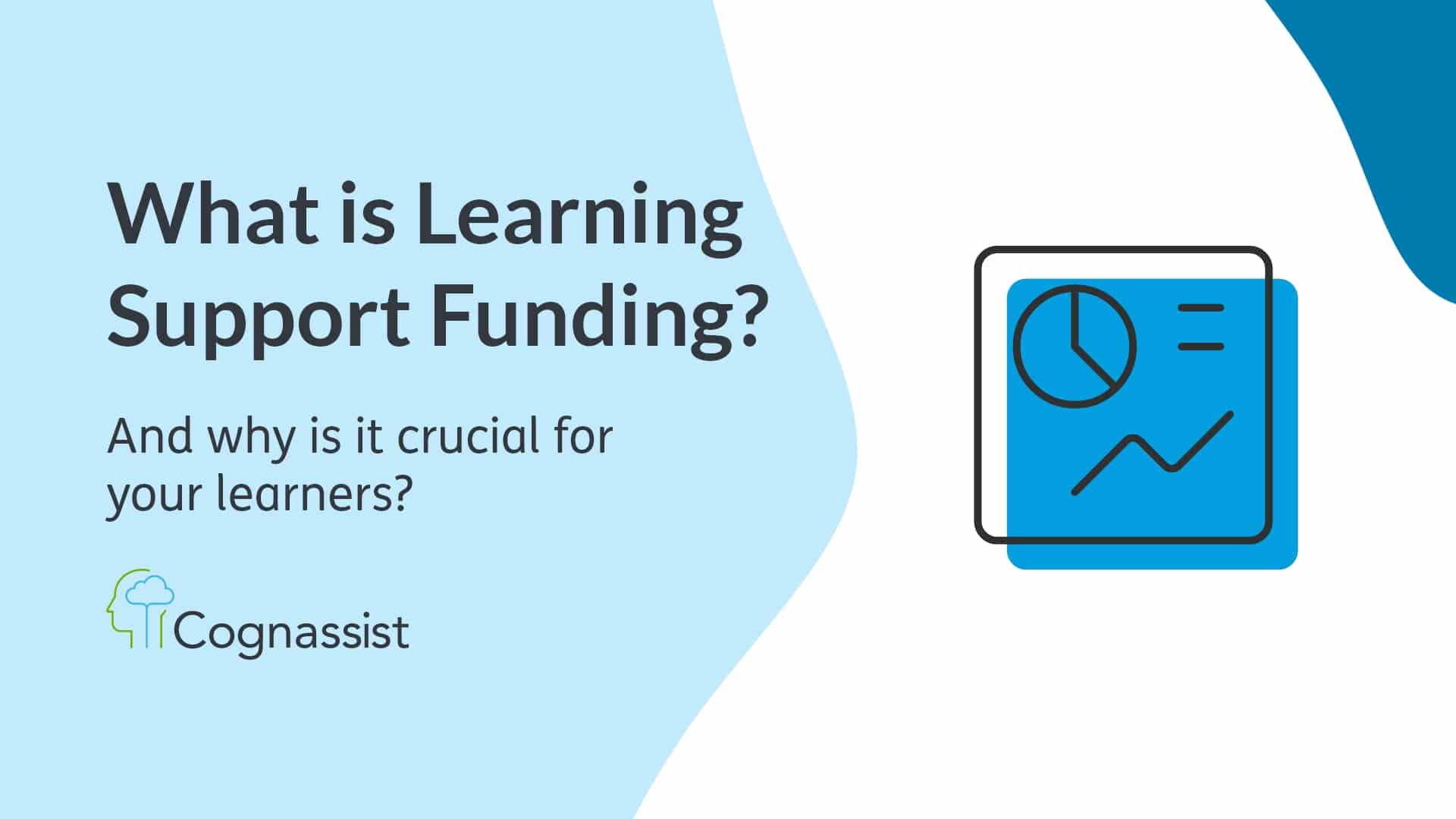
What is Learning Support Funding and how does it work?
Apprenticeship providers are committed to supporting apprentices and helping them achieve the best results, setting them up for a successful career.
In order to support providers in that mission, the Government provides Learning Support Funding (LSF1) to eligible apprentices with identified learning difficulties and disabilities (LDD). LSF1 can be used to give different learners extra time with tutors, cover the costs of assistive software, implement reasonable adjustments and more.
In this article, we go into detail about what Learning Support Funding is and how it works based on the Government guidelines.
What is Learning Support Funding?
The Government has set out rules and regulations for the funding of apprenticeships and adult education in the UK.
Learning Support Funding (LSF1) is part of the Department for Education (DfE) provisions to support learners with identified learning difficulties or disabilities.
While the DfE is responsible for funding policy, the funding itself is provided and monitored by the Education and Skills Funding Agency (ESFA). The LSF1 funding stream is there help providers work more flexibly and support the identified needs of their learners.
“Learning support funding is available to meet the costs of putting in place reasonable adjustments.” (DfE, 2023)
The funding is there to empower learners who would otherwise struggle to continue or complete their course. And it means that more learners can achieve their learning goals.
How does Learning Support Funding work?
To successfully access LSF1, you need two things:
- Evidence at the start of a learner’s programme.
- Ongoing monthly evidence of support.
Initial evidence
At the start of a learner’s programme, providers should be identifying their learners who require learning support and include this information on the apprentice’s individualised learner record (ILR).
According to the funding rules, the initial assessment must include identification and recognition of the individual’s relevant prior learning as well as the identification of any learning support needs that will have a direct impact on the apprentice’s chances of completion.
The recent rules state: “As part of the initial assessment (which is an eligible cost), the provider must undertake a screening exercise for learning support.
“Where this assessment identifies potential learning difficulties and / or disabilities, and before a claim for learning support funding (to cover the cost of reasonable adjustments) can be made, the provider may need to undertake a further detailed assessment to identify whether an apprentice has a learning difficulty or disability that directly impacts their ability to complete the apprenticeship on which they are enrolled.” (DfE, 2023)
Understanding what level of support learners might need and removing the barriers to success is critical.
The rules also state: “[T]his can include an apprentice who has not previously had a learning difficulty or disability identified, but in relation to whom the provider has identified a learning difficulty or disability […].” (DfE, 2023)
This means that learners do not require a formal diagnosis to receive support.
If a discussion with a learner reveals that they previously received support at school, written notes of this discussion can count towards evidence of an identified need.
But often learners have hidden learning needs that they may be completely unaware of, and it can be hard to identify these needs.
Providers must complete a needs assessment for each learner to understand and evidence the impact that any identified needs will have on an apprentice’s ability to complete their programme, whether they have been formally diagnosed or not.
It’s crucial to assess all your learners during onboarding to ensure that needs are identified and that learners who require reasonable adjustments receive the appropriate support from day one.
Monthly evidence
In terms of ongoing support, providers should be evidencing any support they are giving to learners on a monthly basis.
“For the months where learning support funding is claimed, the provider has evidence and documented details of the necessary reasonable adjustments that have been delivered in that period.” (DfE, 2023)
Monthly reviews help to record the outcomes of learning support and make sure the learner is happy with their support. Providers can take this opportunity to talk about what’s working for the learner and what isn’t. Helping to improve the overall quality of learning provisions.
All this forms part of the evidence pack.
The Government guidance requires providers to hold details of any learning difficulties or disabilities identified, including an initial assessment or discussion of these learning needs, and the impact these have on the apprentice’s chances of completion. As well as details of how you will meet these needs and a record of all outcomes.
The Government funding stream gives providers the flexibility to deliver a personalised approach to learning for apprentices that require support. It is there to ensure that all learners receive the same high quality experience and remove barriers to learning.
With this introduction, you can find out more in our next article on how to use LSF1 funding to support LDD or high needs learners.

Helen
Science Communications Manager
